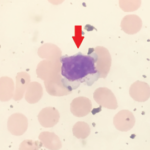Many factors may cause osteoporosis, some of which are modifiable, noted Buckland, who wasn’t involved in the study.
“Dietary intake of calcium and vitamin D and exposure to sunlight are important in maintaining bone mineral density. Regular weight-bearing exercises also help in maintaining bone mineral density,” he said.
Medical management of common endocrine conditions such as thyroid, adrenal or pituitary dysfunction as well as hypogonadism are other important factors in the elderly population to prevent secondary osteoporosis, Buckland said.
Avoidance of osteoporotic fractures, including vertebral and hip fractures, “is an important preventative management goal in patients with osteoporosis,” he said.
Although back pain is the primary symptom of a vertebral fracture, most back pain is due to something else, Buckland added. Most episodes of back pain are muscular in nature and last for less than six weeks and normally respond well to over the counter anti-inflammatory medicines and core strengthening exercises, he said.
“If you are experiencing persistent back pain for more than 6 weeks, or have associated weakness, numbness, bladder or bowel disturbance, or when pain is not adequately controlled, this is when you should seek medical evaluation and imaging,” Buckland said.
Reference
- Fink HA, Litwack-Harrison S, Ensrud KE, et al. Association of Incident, Clinically Undiagnosed Radiographic Vertebral Fractures With Follow-UpBack Pain Symptoms in Older Men: the Osteoporotic Fractures in Men (MrOS) Study. Journal of Bone and Mineral Research. 2017 Sep 7. [Epub ahead of print]

